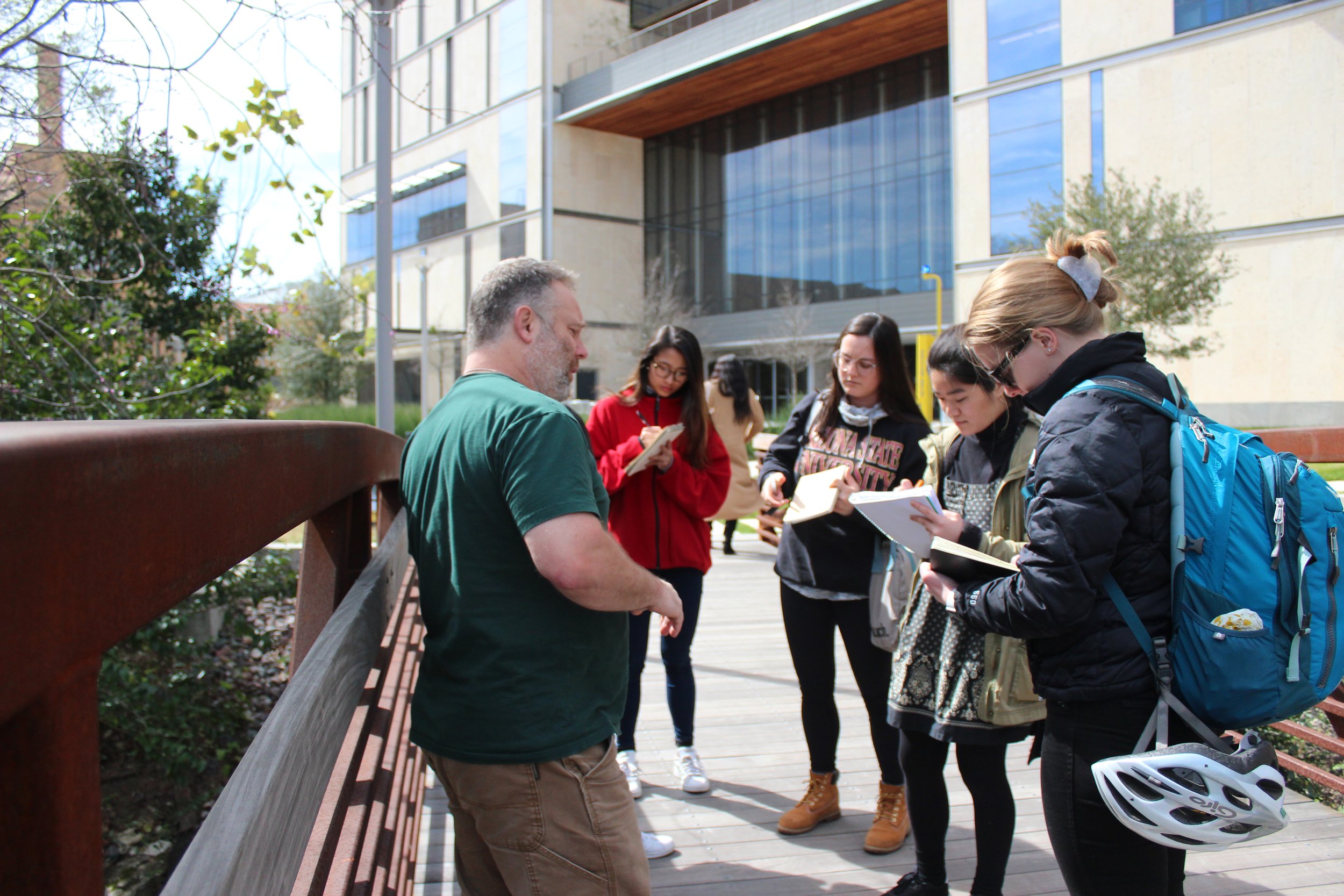Center for Integrated Design
At the Center for Integrated Design, we believe that anyone can learn creative mindsets and methods.
Our vision is To provide Design-based learning experiences at The University of Texas at Austin for every student to integrate human-centered Design skills into their own disciplines.
Integrating Design into all disciplines
We are breaking down traditional silos in academia and leading with our values of collaboration, creativity, and empathy.
Designing life-changing learning experiences
We are integrating Design into all parts of the UT campus. Every year, we teach hundreds of students to work collaboratively across disciplines, understand challenges using empathy, build prototypes that test their ideas, and practice skills of storytelling and communication. Our courses range from Design Thinking to Artificial Intelligence, and Sketching to Future Studies, but each class is grounded in the principles of Design and teaches students new ways to understand and respond to complex and ambiguous problems.
Finding Innovate Ways to Build a Sense of Belonging
What’s Your Designer Type?
What’s Your Designer Type was created to create an engaging and fun reflection on the skills and talents that everyone brings to the practice of design. It also provides an identity within the larger discipline of design beyond traditional professional titles, and it honors the learning and work that each student is doing to integrate design into their experiences. It was created in collaboration with MFA in Design student Christoph Sokol.









